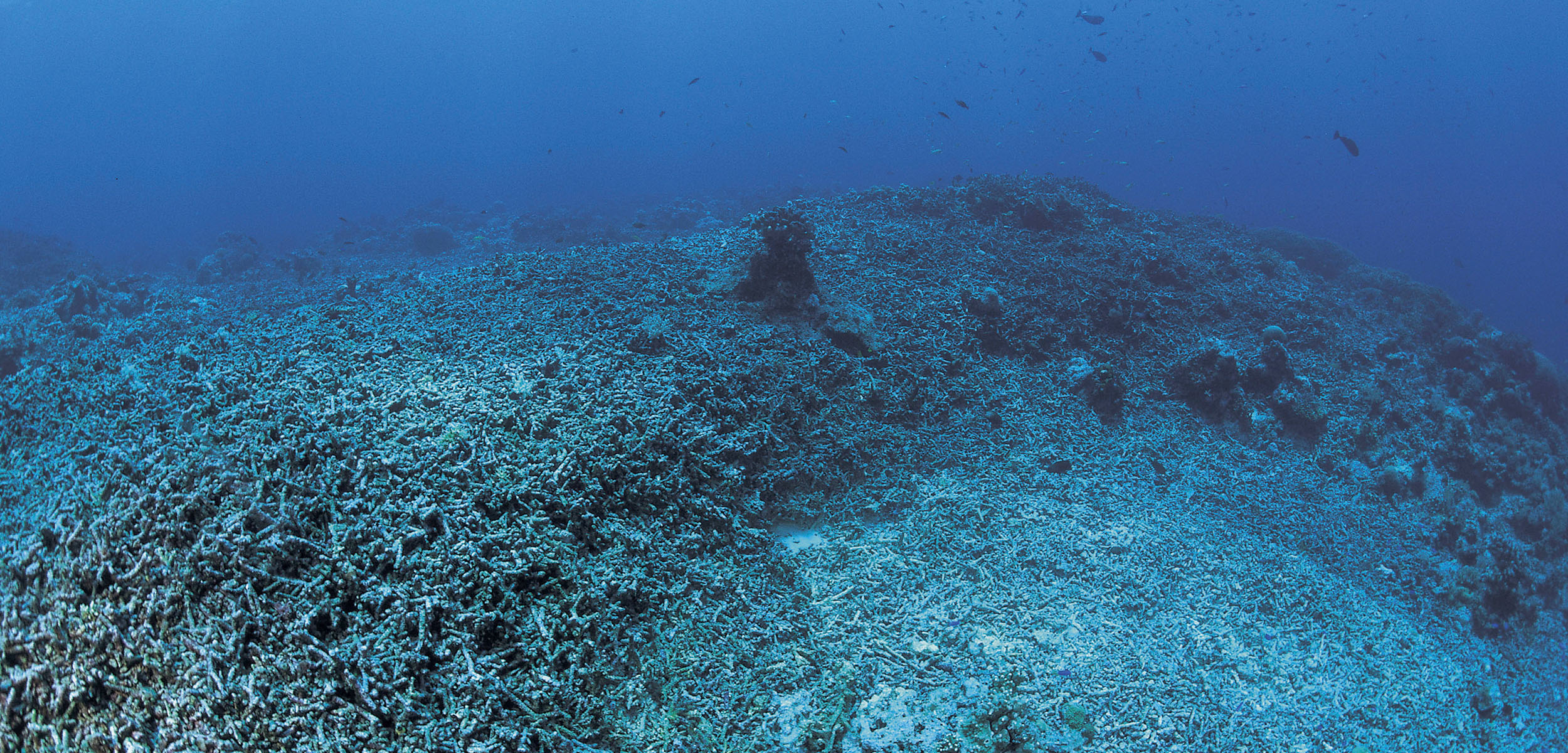In Tanzania, the Fight against Blast Fishing Is Ramping Up
Explosives offer an effective—and extremely destructive—way to fish.
Article body copy
The sun is glinting off the gently rolling Tanzanian waters when a jet of water suddenly punches toward the heavens. The blast wave races out, shattering the delicate coral below. Fish that had been busy grazing or dozing are tossed to and fro, stunned by the passing pulse of pressure. From above, a net dips down and scoops them up. Most people have heard of shooting fish in a barrel. Here is the real-world equivalent: blast fishing.
Also known as bomb fishing or dynamite fishing, blast fishing is a critical issue in Tanzania, says Kennedy Osuka, a fish ecologist at the University of Liverpool in England. Osuka has spent seven years studying the Tanzanian coral reefs that have been reduced to rubble by blast fishing. For those concerned about the country’s marine habitats, artisanal fisheries, or tourism industry, “stopping blast fishing is of the utmost importance,” Osuka says.
Since its invention in the late 1800s, fishers from across Southeast Asia, Africa, Europe, and South America have used the destructive technique. It has declined in many places, but in recent years blast fishing has remained a particular problem in Malaysia, Indonesia, Tanzania, and the Philippines.
In Tanzania, blast fishing first caught on in the 1960s. Blasting increased dramatically through the 1980s and ’90s, peaking in the 2010s at an estimated 50,000 to 70,000 blasts per year. Its prevalence is driven by the affordability and accessibility of illegally sold explosives, usually sourced from the mining and construction industries.
Blast fishing became popular because it gave fishers a big catch relatively easily—though with considerable risk. Over time, however, as successive explosions ripped apart reefs, life has found it harder and harder to bounce back.
Extensive government enforcement initiatives around the year 2000, and again around 2020, brought lulls in blasting. But blast fishing is on the rise again.
“When blast fishing starts to resurge, past experience has shown it goes up very quickly,” says Jason Rubens, an independent fisheries and marine conservation specialist who has worked in Tanzania for more than 25 years. Rubens has spent time documenting the history of blast fishing in the country. “Right now, we’re back at the start of an upswing,” he says.
To push back, the Tanzanian government partnered with community members, nongovernmental organizations, the United States Agency for International Development, and the private sector to launch the US $25-million Heshimu Bahari “Respect the Ocean” project in 2022. This five-year effort aims to strengthen Tanzania’s network of marine protected areas, address climate resilience, and combat overfishing and illegal practices.
Blast fishing, also known as dynamite fishing or bomb fishing, is what it sounds like: using explosives to fish. The destructive technique is banned in most countries, but its use persists to the detriment of marine ecosystems and healthy fish stocks. Video courtesy of Jason Rubens
Stopping blast fishing, however, is complicated. Blast fishers know they’re breaking the law, Rubens says, so it’s not an issue of education. Offenders can evade capture by ditching their explosives, and small-scale corruption can subvert enforcement efforts and make community members scared to speak out. Even the fruits of blast fishing—the fish—can be hard to identify. Once fish are frozen it’s hard to tell how they were caught, so the evidence disappears into the supply chain.
“The majority of the community doesn’t want to see blast fishing; they know very well it’s bad for the marine environment, bad for fishing, and bad for their livelihoods,” says Rubens. “But they are intimidated by a minority to tolerate it,” he says, notwithstanding the efforts of a few community leaders who have had localized success fighting against blast fishing over the years.
The key to the government’s approach, then, is to disrupt the availability of explosives. Restricting the supply of explosives and detonators is how Tanzania got a handle on blast fishing the last time it was tackled. Tighter controls on explosives and hefty jail time for unlicensed possession are also part of how neighboring countries, including Kenya and Mozambique, have dealt with the same problem.
Beyond cracking down on the availability of explosives, Rubens says projects like Heshimu Bahari can help by supporting better monitoring of blast fishing activity so the government can track where it is happening and how rates are changing over time. That’s vital information for planning future operations.
“Ultimately, it is the government that can and will stop blast fishing,” Rubens says. “I believe it will be brought under control again soon.”

